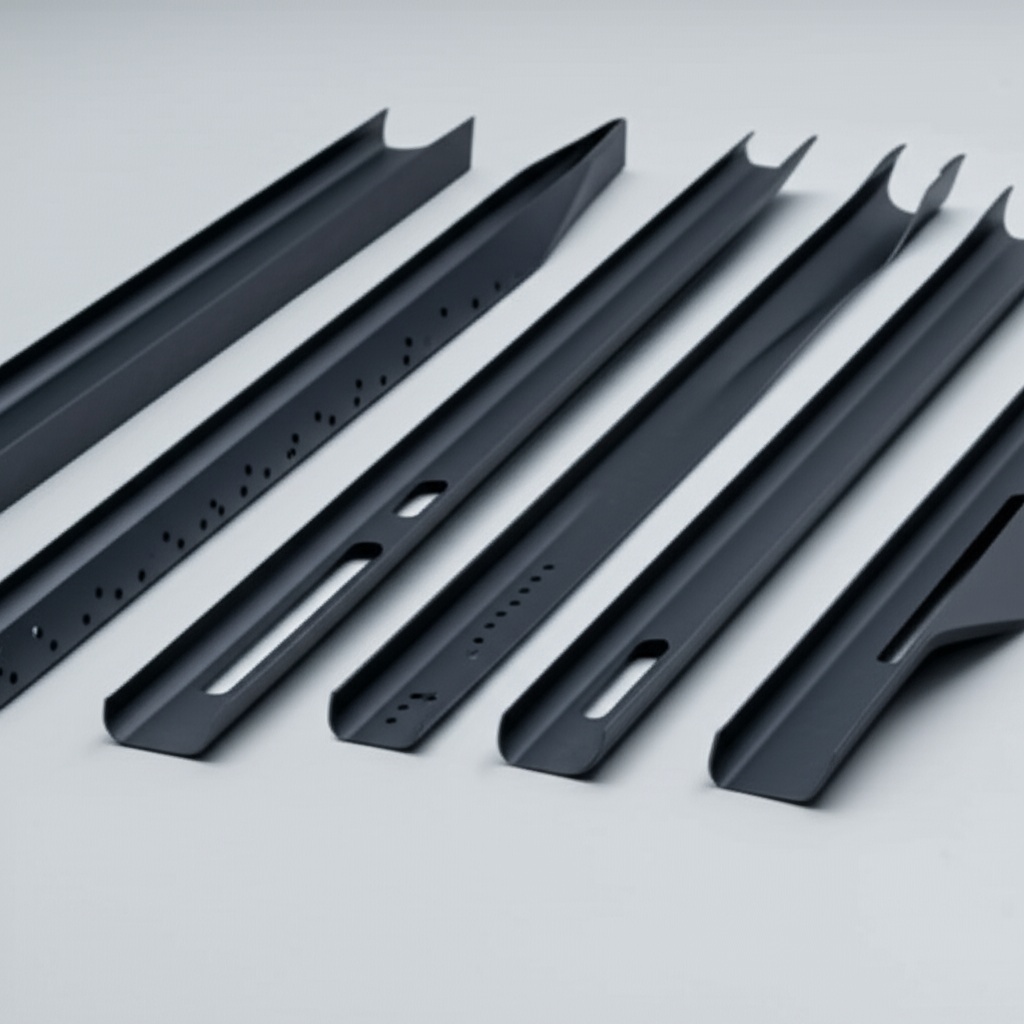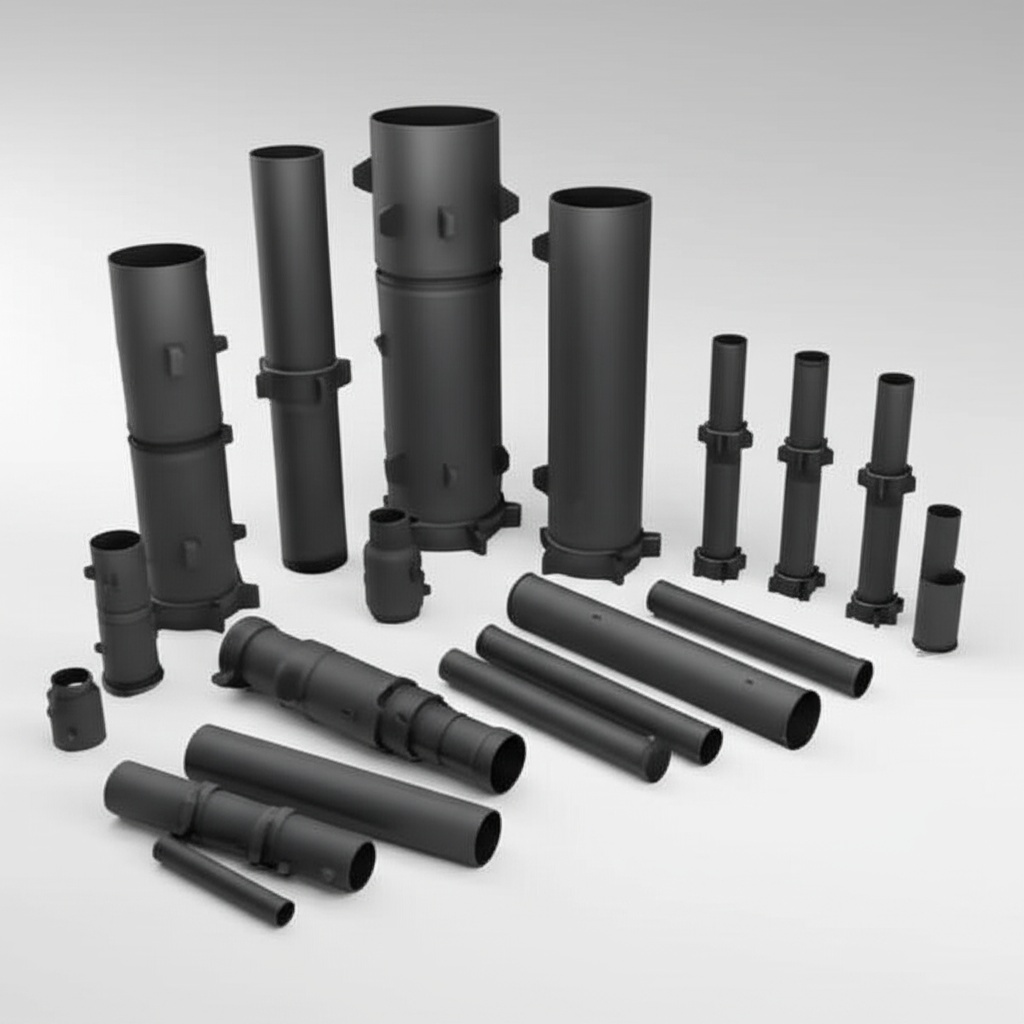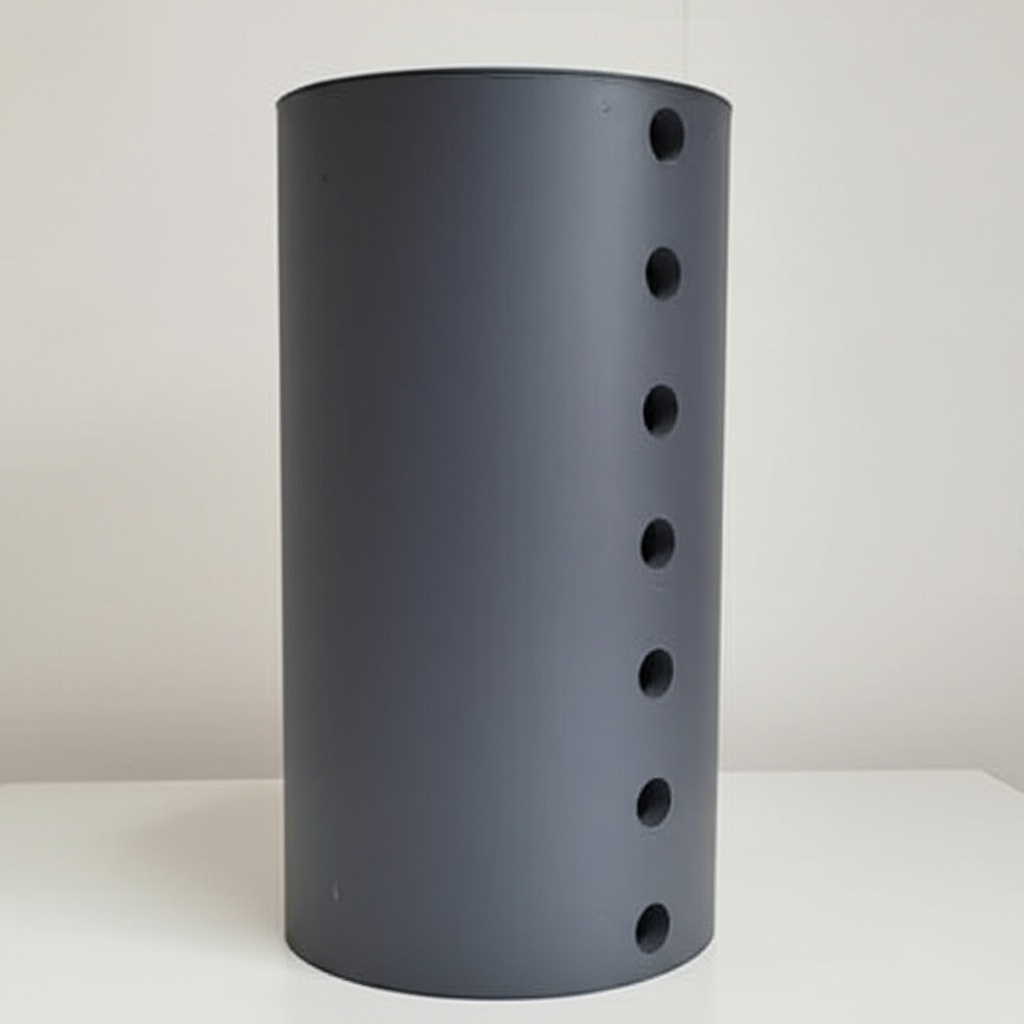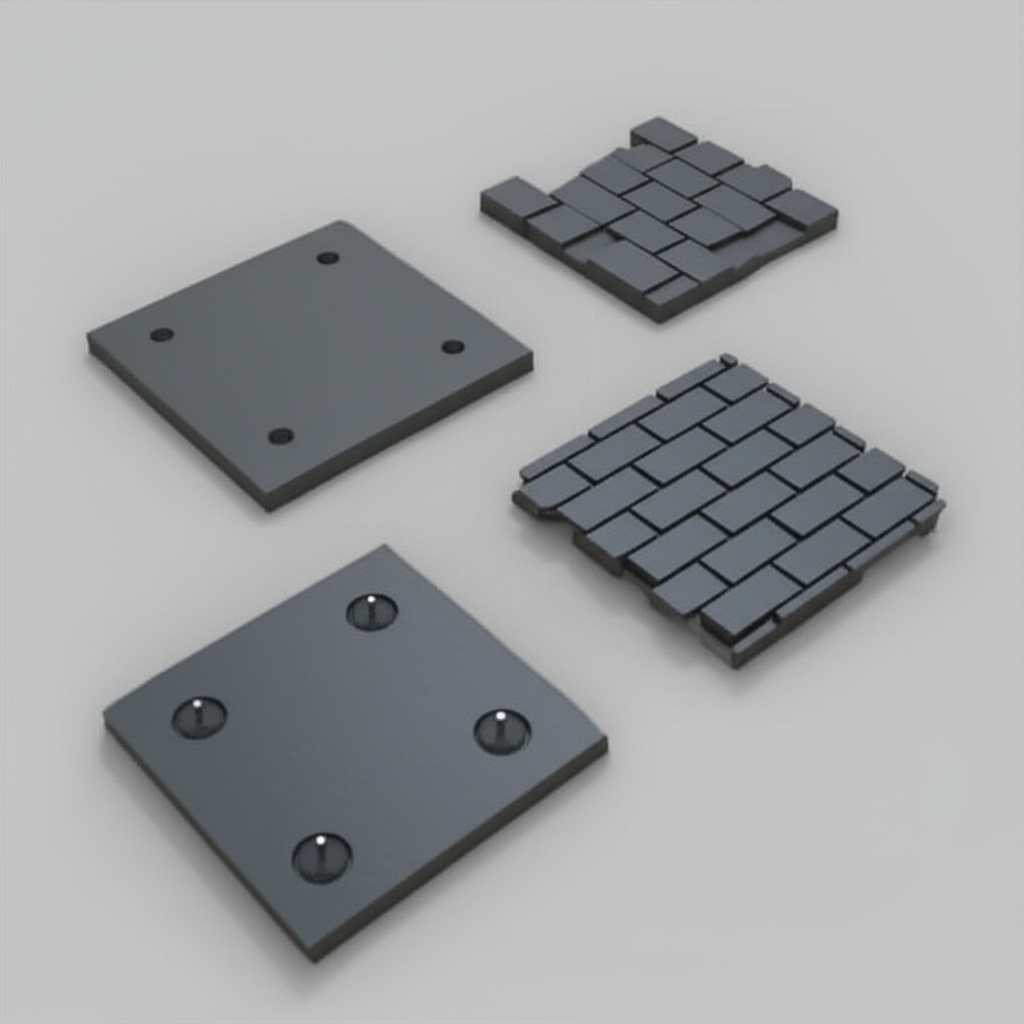Russian SiC Products for Various Industrial Uses

Share
Russian SiC Products for Various Industrial Uses
In the evolving landscape of advanced materials, silicon carbide (SiC) stands out as a critical component for industries demanding exceptional performance under extreme conditions. As a technical content writer for a company specializing in custom SiC products, we delve into the world of this remarkable material, focusing on its applications and the unparalleled benefits it offers. This post is tailored for engineers, procurement managers, and technical buyers across a spectrum of industries, including semiconductors, high-temperature processing, aerospace, energy, and industrial manufacturing.
1. Introduction: What are Custom Silicon Carbide Products?
Custom silicon carbide products are engineered ceramic components designed to meet specific, demanding requirements of industrial applications. Known for its superior hardness, high thermal conductivity, excellent wear resistance, and chemical inertness, SiC is an indispensable material where conventional metals or plastics simply fall short. Unlike off-the-shelf solutions, custom SiC components are meticulously crafted to exact specifications, ensuring optimal performance, longevity, and cost-efficiency in critical systems.
The global demand for high-performance technical ceramics, particularly SiC, continues to surge. From enhancing the efficiency of power electronics to enabling safe operation in nuclear reactors, SiC’s unique properties make it a material of choice for innovation and reliability.
2. Main Applications of SiC Across Industries
Silicon carbide’s versatility allows it to be employed across a vast array of high-stakes industrial sectors:
- Semiconductor Manufacturing: SiC is crucial for wafer processing equipment, susceptors, and various components due to its high purity, thermal stability, and plasma resistance. It prevents contamination and ensures precise temperature control, vital for producing advanced microchips.
- Automotive Companies: In electric vehicles (EVs), SiC is revolutionizing power electronics, enabling more efficient inverters, faster charging, and extended battery life. Its high breakdown voltage and thermal conductivity are key for next-generation EV powertrains.
- Aerospace Companies: For aircraft and spacecraft, SiC offers lightweight, high-strength components capable of withstanding extreme temperatures and harsh environments, including rocket nozzles, brake discs, and structural elements.
- Power Electronics Manufacturers: SiC power devices are rapidly replacing silicon-based counterparts in applications like solar inverters, wind turbine converters, and uninterruptible power supplies (UPS), leading to smaller, more efficient, and more reliable systems.
- Renewable Energy Companies: Beyond power electronics, SiC components are found in concentrated solar power (CSP) systems, geothermal energy production, and even advanced nuclear reactors for their exceptional thermal and radiation resistance.
- Metallurgical Companies: SiC crucibles, furnace linings, and heat exchangers are indispensable in high-temperature melting and refining processes, offering superior resistance to thermal shock and chemical attack.
- Defense Contractors: For ballistic protection, armor plating, and high-performance components in military vehicles and equipment, SiC’s hardness and lightweight properties are invaluable.
- Chemical Processing Companies: Pumps, valves, nozzles, and heat exchangers made from SiC resist highly corrosive chemicals and abrasive slurries, ensuring durability and process integrity in aggressive chemical environments.
- LED Manufacturers: SiC substrates are used for growing GaN epitaxial layers, which are fundamental to high-brightness LEDs, offering excellent thermal management and crystal quality.
- Industrial Equipment Manufacturers: From bearings and seals to nozzles and cutting tools, SiC improves the lifespan and efficiency of machinery operating under severe conditions.
- Telecommunications Companies: SiC is being explored for high-frequency, high-power communication devices and infrastructure due to its robust electrical properties.
- Oil and Gas Companies: Components like seals, bearings, and nozzles made from SiC withstand abrasive fluids and corrosive chemicals encountered in drilling and refining operations.
- Medical Device Manufacturers: SiC’s biocompatibility and wear resistance make it suitable for certain medical instruments and implants, though these applications are still emerging.
- Rail Transportation Companies: SiC is integrated into traction systems for trains, improving efficiency and reliability similar to its role in automotive power electronics.
- Nuclear Energy Companies: Its exceptional neutron irradiation resistance and high-temperature stability make SiC a prime candidate for next-generation nuclear reactor components, including fuel cladding and structural parts.
3. Why Choose Custom Silicon Carbide? Advantages for Industrial Buyers
Opting for custom silicon carbide solutions provides distinct advantages for procurement managers and engineers:
- Tailored Performance: Exacting specifications mean the component is optimized for your unique operational parameters, maximizing efficiency and lifespan.
- Superior Thermal Resistance: SiC maintains its strength and integrity at extremely high temperatures (up to 1650°C), far beyond the capabilities of most metals.
- Exceptional Wear Resistance: Its extreme hardness (Mohs 9.5) makes SiC ideal for abrasive environments, significantly extending the life of components like seals, bearings, and nozzles.
- Chemical Inertness: SiC resists attack from most acids, alkalis, and corrosive gases, making it perfect for harsh chemical processing applications.
- High Thermal Conductivity: Efficiently dissipates heat, critical for performance in power electronics and thermal management systems.
- Low Thermal Expansion: Minimizes thermal stress and maintains dimensional stability across a wide temperature range.
- Lightweight: Offers significant weight savings compared to traditional metal alloys, crucial for aerospace and automotive applications.
- Electrical Properties: Can be engineered to be an excellent electrical insulator or a semiconductor, depending on the application.
4. Recommended SiC Grades and Compositions
The performance of SiC can be further tailored through different manufacturing processes, leading to various grades, each with unique properties:
| SiC Grade/Type | Description | Key Properties | Typical Applications |
|---|---|---|---|
| Reaction-Bonded SiC (RBSiC) | Porous SiC infiltrated with molten silicon. | High strength, excellent thermal shock resistance, good wear resistance, cost-effective for large components. | Furnace components, large nozzles, heat exchangers, automotive brake discs. |
| Sintered SiC (SSiC) | High-purity SiC densified by sintering without a binder phase. | Extremely high strength, exceptional hardness, excellent chemical resistance, high thermal conductivity. | Mechanical seals, bearings, pump parts, semiconductor processing components. |
| Nitride-Bonded SiC (NBSiC) | SiC grains bonded with silicon nitride. | Good strength, high thermal shock resistance, good oxidation resistance, lower cost than SSiC. | Refractory applications, kiln furniture, wear plates. |
| CVD SiC (Chemical Vapor Deposition SiC) | High-purity, dense SiC formed by chemical vapor deposition. | Extremely high purity, near-theoretical density, excellent surface finish, superior wear and corrosion resistance. | Semiconductor susceptors, optical components, high-purity crucibles. |
5. Design Considerations for SiC Products
Designing with SiC requires specialized knowledge due to its inherent properties, such as high hardness and brittleness. Key considerations include:
- Geometry Limits: Avoid sharp corners and abrupt changes in cross-section to minimize stress concentrations. Radii should be maximized wherever possible.
- Wall Thickness Uniformity: Consistent wall thickness facilitates uniform heating and cooling during manufacturing, reducing internal stresses and warping.
- Tolerances: While SiC can achieve high precision, specifying tighter tolerances than necessary can significantly increase machining costs. Collaborate with your supplier to define achievable and cost-effective tolerances.
- Mounting & Joining: Account for the material’s stiffness and thermal expansion differences when designing interfaces with other materials. Mechanical fastening often requires careful design to avoid point loading.
- Stress Points: Identify potential stress points during operation and design to distribute loads evenly. Finite Element Analysis (FEA) is often employed for complex designs.
6. Tolerance, Surface Finish & Dimensional Accuracy
Achieving precise dimensions and superior surface finishes in SiC components is a testament to advanced manufacturing capabilities:
- Achievable Tolerances: Precision grinding and lapping allow for very tight tolerances, often in the range of microns, depending on the component’s size and complexity.
- Surface Finish Options: From as-fired surfaces to highly polished, mirror-like finishes, SiC can be processed to various roughness specifications (Ra values). A smoother finish generally improves wear resistance and reduces friction.
- Dimensional Accuracy: Consistent dimensional accuracy is critical for components that need to integrate seamlessly into complex systems. Advanced metrology techniques are used to ensure parts meet stringent specifications.
7. Post-Processing Needs for Enhanced Performance
After initial fabrication, SiC components often undergo post-processing to optimize their properties and performance:
- Grinding & Lapping: Essential for achieving tight tolerances, precise geometries, and smooth surface finishes.
- Polishing: Creates extremely smooth surfaces, crucial for applications requiring minimal friction or optical clarity.
- Sealing & Impregnation: For porous SiC grades, sealing can enhance density and impermeability, improving performance in fluid-handling applications.
- Coating: Applying specialized coatings can further enhance wear resistance, corrosion resistance, or electrical properties for specific applications.
- Brazing & Joining: Techniques for permanently bonding SiC components to themselves or dissimilar materials, critical for complex assemblies.
8. Common Challenges and How to Overcome Them
While SiC offers immense benefits, its unique properties present certain manufacturing and application challenges:
- Brittleness: Like most ceramics, SiC is brittle and susceptible to fracture under tensile stress or impact. Design strategies focus on compressive loading and minimizing stress concentrations.
- Machining Complexity: Its extreme hardness makes machining SiC challenging and expensive, typically requiring diamond tooling. Near-net-shape manufacturing is often preferred to reduce post-sintering machining.
- Thermal Shock: While generally good, extreme temperature gradients can still induce thermal shock. Proper material selection (e.g., RBSiC has superior thermal shock resistance) and design can mitigate this risk.
- Cost: SiC components are generally more expensive than metallic parts. However, their extended lifespan and superior performance often lead to a lower total cost of ownership in demanding applications.
9. How to Choose the Right SiC Supplier
Selecting a reliable supplier for custom SiC products is paramount to project success. Look for a partner with:
- Technical Capabilities: Expertise in various SiC grades, advanced manufacturing processes (sintering, reaction bonding, CVD), and precision machining.
- Material Options: A diverse portfolio of SiC compositions to match your specific application requirements.
- Quality Certifications: Adherence to industry standards such as ISO 9001, ensuring consistent quality and traceability.
- Engineering Support: A team of experienced engineers who can collaborate on design, material selection, and optimization for manufacturability.
- Proven Track Record: Case studies and testimonials demonstrating successful projects with other industrial clients.
- Production Capacity and Lead Time: Ability to meet your volume requirements and deliver within your project timelines.
A Trusted Partner in Custom SiC
When considering a supplier for your critical silicon carbide components, it’s essential to partner with a company that combines deep technical expertise with a proven track record. Here is the hub of China’s silicon carbide customizable parts factories. As you are aware, the hub of China’s silicon carbide customizable parts manufacturing is situated in Weifang City of China. Now the region has been home to over 40 silicon carbide production enterprises of various sizes, collectively accounting for more than 80% of the nation’s total silicon carbide output.
We, Sicarb Tech, have been introducing and implementing silicon carbide production technology since 2015, assisting the local enterprises in achieving large-scale production and technological advancements in product processes. We have been a witness to the emergence and ongoing development of the local silicon carbide industry.
Based on the platform of the national technology transfer center of the Chinese Academy of Sciences, Sicarb Tech is part of Chinese Academy of Sciences (Weifang) Innovation Park, an entrepreneurial park that collaborates closely with the National Technology Transfer Center of the Chinese Academy of Sciences. It serves as a national-level innovation and entrepreneurship service platform, integrating innovation, entrepreneurship, technology transfer, venture capital, incubation, acceleration, and scientific and technological services.
Sicarb Tech capitalizes on the robust scientific, technological capabilities and talent pool of the Chinese Academy of Sciences . Backed by the Chinese Academy of Sciences National Technology Transfer Center, it serves as a bridge, facilitating the integration and collaboration of crucial elements in the transfer and commercialization of scientific and technological achievements. Moreover, it has established a comprehensive service ecosystem that spans the entire spectrum of the technology transfer and transformation process.
With a domestic top-tier professional team specializing in customized production of silicon carbide products, Sicarb Tech offers more reliable quality and supply assurance within China. Under our support, 493+ local enterprises have benefited from our technologies. We possess a wide array of technologies, such as material, process, design, measurement & evaluation technologies, along with the integrated process from materials to products. This enables us to meet diverse customization needs. We can offer you higher-quality, cost-competitive customized silicon carbide components in China.
We are also committed to assisting you in establishing a specialized factory. If you need to build a professional silicon carbide products manufacturing plant in your country, Sicarb Tech can provide you with the technology transfer for professional silicon carbide production, along with a full range of services (turnkey project) including factory design, procurement of specialized equipment, installation and commissioning, and trial production. This enables you to own a professional silicon carbide products manufacturing plant while ensuring a more effective investment, reliable technology transformation, and guaranteed input-output ratio. Feel free to contact us to discuss your specific requirements.
10. Cost Drivers and Lead Time Considerations
Understanding the factors influencing cost and lead time is crucial for effective procurement:
| Cost Driver | Impact on Price |
|---|---|
| Material Grade & Purity | Higher purity and specialized grades (e.g., CVD SiC) are more expensive due to complex manufacturing processes. |
| Component Complexity | Intricate geometries, tight tolerances, and fine features require more advanced machining and increase costs. |
| Size & Weight | Larger and heavier parts consume more material and require larger equipment, impacting cost. |
| Surface Finish Requirements | Achieving smoother surfaces (e.g., polishing) adds significant processing time and cost. |
| Volume (Economies of Scale) | Higher production volumes typically lead to lower per-unit costs due to amortization of setup and tooling expenses. |
| Post-Processing Needs | Additional steps like sealing, coating, or specialized heat treatments add to the overall cost. |
Lead Time: Lead times for custom SiC products can vary significantly based on design complexity, material availability, manufacturing capacity, and current order backlogs. It’s essential to communicate your project timeline clearly with your supplier and plan accordingly, especially for critical components.
11. Frequently Asked Questions (FAQ)
Q1: What is the maximum operating temperature for silicon carbide products?
A: The maximum operating temperature for silicon carbide (SiC) products can vary depending on the specific grade and application, but generally, SiC can withstand temperatures up to approximately 1650°C (3000°F) in oxidizing atmospheres, and even higher in inert or vacuum environments.
Q2: Can silicon carbide be repaired if damaged?
A: Due to its extreme hardness and brittleness, repairing silicon carbide components is generally challenging and often not feasible for maintaining original performance. Small chips or cracks might sometimes be addressed with specialized grinding or bonding, but significant damage usually necessitates replacement. Preventive measures and proper design are key.
Q3: Is silicon carbide electrically conductive?
A: Silicon carbide is a semiconductor, meaning its electrical conductivity can be precisely controlled by doping during manufacturing. It can be engineered to be an excellent electrical insulator for high-voltage applications or a highly conductive material suitable for power electronics and heating elements. This duality makes it incredibly versatile.
Q4: How does custom SiC compare to other advanced ceramics like Alumina or Zirconia?
A: While Alumina (Al2O3) and Zirconia (ZrO2) are also excellent technical ceramics, SiC generally offers superior hardness, higher thermal conductivity, better thermal shock resistance, and greater chemical inertness, especially at elevated temperatures. However, Alumina is typically more cost-effective for less demanding applications, and Zirconia boasts higher fracture toughness. The choice depends entirely on the specific application’s requirements.
Q5: What certifications should I look for in a SiC supplier?
A: For industrial buyers, look for suppliers with ISO 9001 certification for quality management. Depending on the industry, additional certifications like AS9100 for aerospace or specific material traceability standards may also be crucial.
To learn more about our commitment to quality and our broad range of capabilities, please visit our About Us page.
12. Conclusion
Custom silicon carbide products are not just components; they are strategic investments in the performance, longevity, and efficiency of critical industrial systems. Their unparalleled properties—from extreme thermal and wear resistance to chemical inertness—make them indispensable for pushing the boundaries of innovation across diverse sectors. By partnering with a knowledgeable and capable SiC supplier, businesses can unlock the full potential of this advanced material, ensuring their operations remain at the forefront of technological advancement and reliability.
For more detailed information on our customized SiC solutions and how we can support your specific projects, we invite you to explore our website or contact our expert team directly. Let us help you engineer excellence with custom silicon carbide.

About the Author: Sicarb Tech
We provide clear and reliable insights into silicon carbide materials, component manufacturing, application technologies, and global market trends. Our content reflects industry expertise, practical experience, and a commitment to helping readers understand the evolving SiC landscape.




